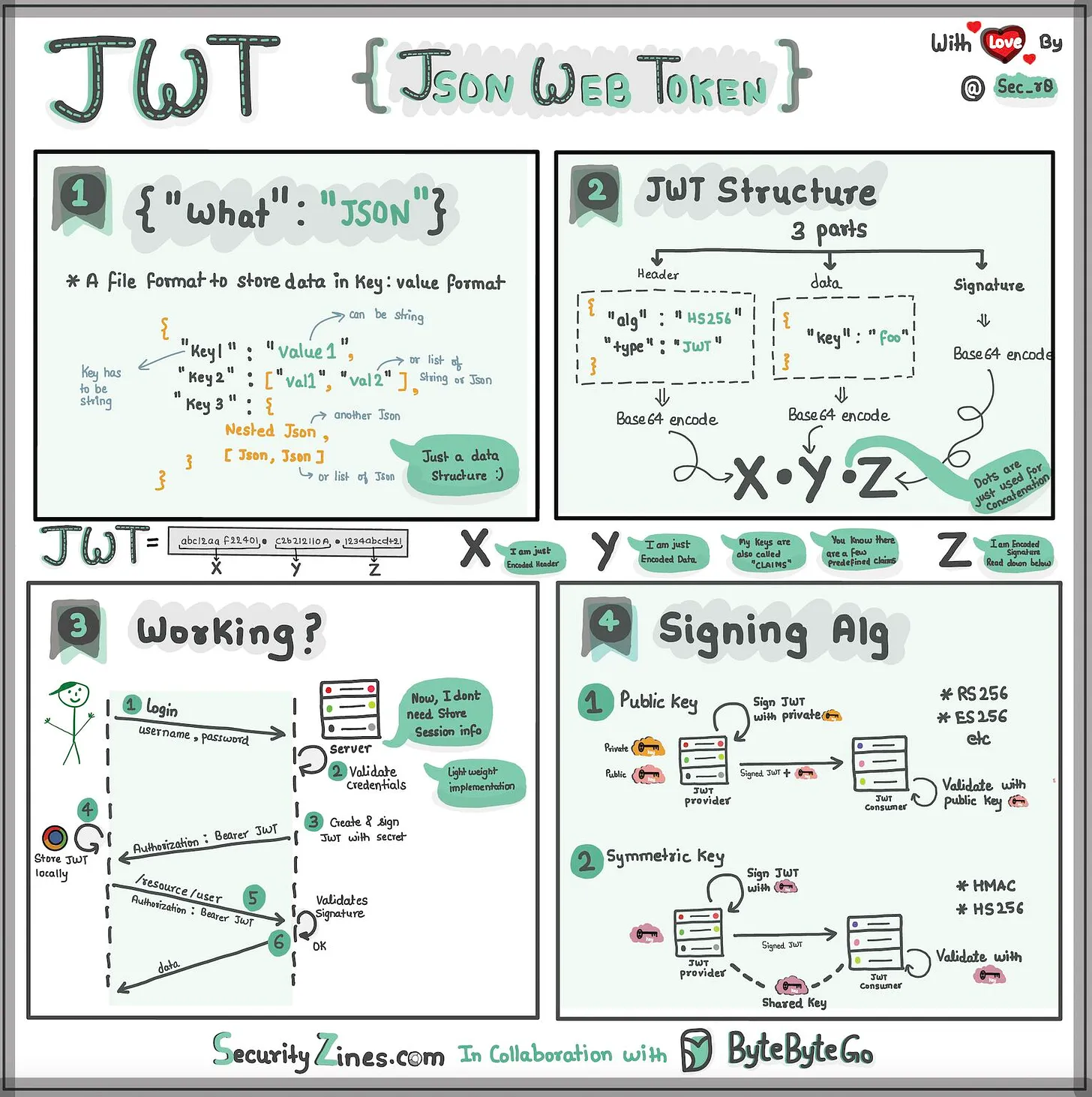JSON Web Tokens (JWTs) are an open, industry standard RFC 7519 method for representing claims securely between two parties.
eyJhbGciOiJIUzI1NiIsInR5cCI6IkpXVCJ9.ey
JzdWIiOiIxMjM0NTY3ODkwIiwibmFtZSI6Ikpva
G4gRG9lIiwiaWF0IjoxNTE2MjM5MDIyfQ.SflKx
wRJSMeKKF2QT4fwpMeJf36POk6yJV_adQssw5c
Although it may look like garbage text, it's actually just a grouping of Base64-Url strings consisting of the following:
xxxxx.yyyyy.zzzzz
The header usually contains the alg (algorithm), and typ (type) of the JWT. Though it can also container additional keys, which may contain public keys, or URLs on where to locate public keys for validation, more on this later.
{
"alg": "HS256",
"typ": "JWT"
}
or...
{
"alg": "RS256",
"typ": "JWT",
"kid": "NTVBOTNjEyMw"
}The following are valid in the header but maybe less common.
kid- Key ID is used as an ID to lookup an asymetric key which is used for validation of the signature.jku- JWK Url is a JSON Web Key URL, and is the URL used to retrieve a JWK.x5u- X.509 Url is a URL used to retrieve an X.509 certificate.
typ) doesn't have to be JWT, although most are, you should get into a habbit of using Explicit Typing where possible. ie: "typ": "at+jwt" could represent an Access Token JWT. Be explicit, and check for types.
The Payload contains claims. Claims are statements about an entity and additional metadata. Generally there are three types of claims:
- Registered/Reserved Claims - Are sets of predefined claims, although not required, provide useful, interoperable claims. Examples are:
iss- Issuer identifies the principal that issued the JWT.sub- Subject identifies the principal that is the subject of the JWT.aud- Audience identifies the recipients that the JWT is intended for.exp- Expiration Time identifies the expiration time on or after which the JWT must not be accepted for processing.nbf- Not Before identifies the time before which the JWT must not be accepted for processing.iat- Issued At identifies the time at which the JWT was issued.jti- JWT ID is a unique identifier for the JWT.
- Public Cliams can be defined at will by those using JWTs. But to avoid collisions they should be defined in the IANA JSON Web Token Registry or be defined as a URI that contains a collision resistant namespace.
- Private Claims are the custom claims created to share information between parties that agree on using them.
Example:
{
"sub": "00000000-0000-1111-a111-000000000002",
"username": "tdonaworth",
"role": "admin",
"exp": 1686239022
}The signature is made up of the encoded header, encoded payload, and the secret. These are then run through a hashing algorithm, the same one specified in the header, to give a resulting signature block.
The signature is used to ensure the contents of the header and payload haven't been tampered with. Often times a Signed JWT will be referred to as a JWS (S = Signed).
// Pseudocode - for real examples see /examples directory
header = {
alg: "HS256",
typ: "JWT"
};
payload = {
sub: "00000000-0000-1111-a111-000000000002",
username: "tdonaworth",
role: "admin",
exp: 1686239022,
};
secret = "Super-Secret-Non-Guessable-Key";
// base64url encode the header and payload, and concatenate them with a '.' between them.
unsignedToken = base64url(header, "utf8") + "." + base64url(payload, "utf8);
// Use a known crypto library, to perform a hashing of the unsignedToken, using the secret.
hash = HMACSHA256(unsignedToken, secret);
// base64url encode the signature
signature = base64url(hash, "utf8");
// finally concatinate the unsignedToken, and the signature to get the JWT.
JWT = unsignedToken + "." + signature;If you don't want to write code, but still want to tinker with JWTs, the defacto place to go is JWT.io debugger.
